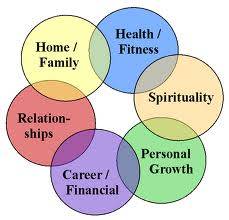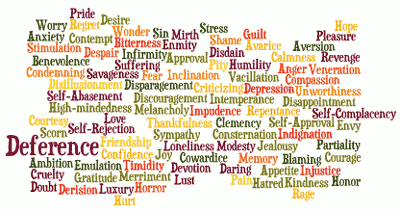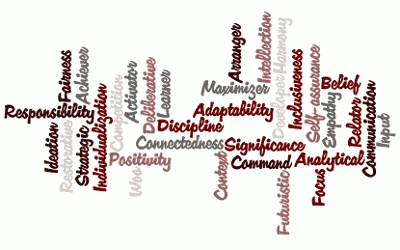

How to Align Your Goals for Success
Do You wish You could Achieve all the Goals You set for Yourself? Learn why You failed in the Past and What You should know & do NOW — to set and Achieve all Your Goals. Attain all round Success through well-planned & achieved Goals.
Ask yourself the question: “Am I committed to my objectives and goals and to my staff?”
YOUR GOALS
 Maybe you have not yet defined your personal goals and thus cannot find any reason to achieve the work-place objectives? Are you just drifting along without a rudder and any sense of purpose? If yes, do proceed to the next chapter to learn the importance of setting your goals and how to set achievable, meaningful, clear goals.
Maybe you have not yet defined your personal goals and thus cannot find any reason to achieve the work-place objectives? Are you just drifting along without a rudder and any sense of purpose? If yes, do proceed to the next chapter to learn the importance of setting your goals and how to set achievable, meaningful, clear goals.
If you are reluctant to set off to work, catch yourself procrastinate at work, doing easy jobs instead of the critical, tough ones; if you are unable to take decisions, find it difficult to be honest in your discussions with your superiors these are all signs that you are de-motivated.
You do not need to consider yourself motivationally challenged. It is within your power to change your attitude about unpleasant tasks, and complete the project and achieve your goals no matter what it is. Using the Seven Happiness Enablers helps you become upbeat, efficient and effective in all areas of your life.
Listing out your goals in 5 areas:
- spiritual (inner being),
- personal (relationships),
- work-life (profession, career),
- material (money),
- society,
as described and then prioritizing the goals, defining an action plan. This list of Goals one motivating source. Your goals are the rudder of your ship as you journey through life.
YOUR VALUES

Next look at values and emotions, at people whom you admire and the values and emotions that they express and analyze which values and emotions attract you. Some may be easy for you to achieve. Now you should strike a balance between ease and importance. All things that are critical for success are not easy to attain. You must practice “faking” till it becomes second habit.
Values list – Adventurous, Affectionate, Authoritarian, Caring, Compassionate, Courage, Creative, Critical, Cruel, Dedication, Devotion, Discerning, Encouraging, Esthetics, Enthusiastic, Excellence, Empowerment, Faith, Fairness, Freedom, Friendly, Generous, Giving, Gracious, Health related, Helpful, Hope, Honesty, Honor, Hostile, Humility, Humor, Independence, Integrity, Intimacy, Kind, Law-abiding, Loyalty, Malleable, Manipulative, Merciful, Nurturing, Patriotic, Peaceful, Permissive, Perseverance, Power, Preservation of Nature, Respect For Elders, Respect for Others, Relationship-oriented, Resilience, Responsibility, Reverence for Life, Righteousness, Risk Taking, Self Respect, Social Harmony, Security, Serving, Spiritual Connection, Social-minded, Supportive, Task-oriented, Thoughtful, Tolerant, Tradition, Trust, Zeal, Zest.
Select your top 5 life values from this list. If their meanings seem identical to you like Integrity, Trust club and consider them as one value to live by. Sailors of yore depended on the light of the stars in the heavens to guide them safely on the rough seas. You should make this list of your top 5 values your guiding stars through the journey of life and use this insight to make important decisions especially when the going is tough and you are in troubled waters.
YOUR EMOTIONS
Now choose from the list of positive emotions that you can choose to possess and which will motivate you; give each of them 2 attributes: ease of acquiring and importance for success. Mark them for ease & importance on a scale of 1 to 5. Then order them as per your linking and draw up an action plan to fake them till you acquire them. Remember to define small milestones along the way and reward yourself from time to time.
The word “emotion” is generally misused for feelings and sentiments – in general, for affects. These are, in neurological and physiological terms, not emotions at all.
Aristotle’s Rhetoric has a long list of irascible and concupiscence emotions in pairs, each with its opposite, such as love and hate or joy and sorrow. Thomas Aquinas in his Summa Theologica adopts a similar listing and grouping. Benedict Spinoza in his Ethics, Book IV presents another list of emotions. We can also find listings of the emotions or passions in Francis Bacon, Thomas Hobbes, and John Locke, and in subsequent writing by British empirical psychologists, David Hume, George Berkeley, and J. S. Mill.

A very short list of emotions is presented in the psychology of William James, where he pays tribute to Professor C. Lange, a Danish physiologist, for his contribution to a theory of emotions that came to be known as the James-Lange theory. The James-Lange theory of emotions applies to the lower animals as well as to human beings, as anyone knows who has observed a hissing and ferocious cat or a frightened rabbit.
Emotions are widespread bodily and visceral changes that are controlled by the sympathetic nervous system. This widespread neurological and physiological commotion includes such things as changes in the respiratory system, pupillary dilation, and electricity in the epidermis, presence of adrenaline in the blood stream, and changes in the pulse. This complex state of changes, occurring simultaneously and accompanied by bodily movements of attack and withdrawal, constitutes an emotion, strictly speaking. Sentiments on the other hand, represent the non-rational aspect of human nature, the aspect of human nature that human beings share with other animals.
Some Emotions are: Ambition, Anger, Anxiety, Appetite, Approval, Avarice, Aversion, Benevolence, Bitterness, Blaming, Calmness, Clemency, Compassion, Condemning, Confidence, Consternation, Contempt, Courage, Courtesy, Cowardice, Criticizing, Cruelty, Daring, Deference, Depression, Derision, Desire, Despair, Devotion, Disappointment, Discouragement, Disdain, Disillusionment, Disparagement, Doubt, Deference, Emulation, Enmity, Envy, Fear, Friendship, Gratitude, Guilt, Hatred, High-mindedness, Honor, Hope, Horror, Humility, Hurt, Impudence, Inclination, Indignation, Infirmity, Injustice, Intemperance, Jealousy, Joy, Kindness, Loneliness, Love, Lust, Luxury, Melancholy, Memory, Merriment, Mirth, Modesty, Pain, Partiality, Pity, Pleasure, Pride, Rage, Regret, Repentance, Revenge, Savageness, Self-Abasement, Self-Approval, Self-Complacency, Self-Rejection, Scorn, Shame, Sin, Stimulation, Stress, Suffering, Sympathy, Thankfulness, Timidity, Unworthiness, Vacillation, Veneration, Wonder, Worry.
The Seven Deadly Sins – Pride, Avarice (Greed), Wrath, Gluttony, Envy, Sloth, and Lust – have been considered checkpoints on the road to Hell for centuries.
There is a way to combat the Seven Deadly Sins: the Seven Cardinal Virtues. By practicing the Virtue of Humility, you can overcome the Sin of Pride. Patience will quell Wrath and Diligence defeats Sloth. Generosity can tackle Greed and Kindness always beats Envy in the end. Abstinence will save you from Gluttony and Chastity defends against Lust. The Eighth Deadly Sin earlier listed was the unforgivable transgression of sadness. Caring and Serving others helps remove this disease of sadness.
Select the 5 most comfortable positive emotions that you like. These 5 positive emotions will be your compass and guide you on your way through life.
Thus defining the values, the emotions and the goals that are important to us will help us identify what motivates us from within. Once we get a clear picture of these self motivators, we can then work towards communicating these needs to those around us so that we start getting the external motivators, which will reinforce the inner motivators.
EXTERNAL MOTIVATORS
Now in the area of external motivators also we should list out (choose from this list to start with and add your own) all external motivators that we have heard about, read of, that have acted as positive motivators in the past, those that have de-motivated us earlier. Prioritize this list also in our personal order of importance.
Some external motivators are:
- Basic Needs At Work – Salary and benefits (basic income, benefits, bonuses, holidays, company car etc),
- Working conditions – (working hours, workplace layout, facilities and equipment provided for the job),
- Company policy – (formal and informal rules and regulations),
- Status – (determined by the rank, authority and relationship to others — reflecting a level of acceptance),
- Job Security – (degree of confidence he has regarding continued employment in the organization),
- Supervision and Authority – (extent and control over the content and execution of his job),
- Office Life – (level and type of interpersonal relations within the working environment),
- Personal Life Motivators – like Achievement,
- Recognition,
- Job Interest,
- Responsibility and Advancement.
Non-financial rewards like handwritten note, engraved trophy; gifts and privileges like holidays, sports facilities, merchandise; special events like weekend outings, parties, theatre trips; professional training including onsite and off-site courses, workshops and seminars; self-development through personal, non-vocational training and f inally equipment like company car, laptop computer, mobile, residence telephone.
Financial rewards like salary increases (increases in basic rate of pay), commission and bonuses (one-off payments linked to targets); performance-related pay (regular wage increases based on target linked performance); shares/stock options (gifts of shares or the chance to buy shares at a fraction of actual value); special rates (help with mortgage/rent, insurance and other items within tax limits) and family health benefits (part or subsidized schemes offering private family healthcare).
Select the top 5 external motivators, which have helped you increase your performance levels in the past. These Five external motivators are your lifebuoys guiding you to safety and pointing you towards the shores of success.
Of course we should periodically revisit and rearrange these lists:
- values,
- emotions,
- goals,
- external motivators.
Then communication and negotiation with those around us to come to a common understanding and recognition of what we value and what rewards are important motivators for us – these are the facts that will help us maintain high motivational levels for longer sustained periods of time.
YOUR STRENGTHS

In their book “Now, Discover Your Strengths“, Marcus Buckingham and Donald O. Clifton have listed out Thirty-four strengths or talents. Identify the 5 signature themes that best fit your top-of-the-mind reactions to situations that you face. Instinctively you will use your signature themes in isolation or in combination to handle any situation in life. Your strengths are your talents – your learned responses that are an integral part of you.
Here is the complete list of 34 strengths – Achiever, Activator, Adaptability, Analytical, Arranger, Belief, Command, Communication, Competition, Connectedness, Context, Deliberative, Developer, Discipline, Empathy, Fairness, Focus, Futuristic, Harmony, Ideation, Inclusiveness, Individualization, Input, Intellect, Learner, Positivity, Relator, Responsibility, Restorative, Maximizer, Self-assurance, Significance, Strategic, Woo.
Recognize your 5 most frequently used strengths (your signature themes). The 5 strengths are your lighthouse and help you to devise motivators and goals that are in tune with your innate, natural talents and this will increase the probability of your success.